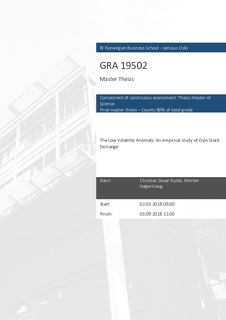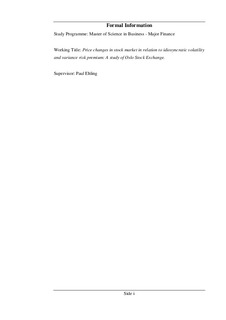| dc.description.abstract | In this paper we study the relation between the cross-sections of idiosyncratic
volatility and returns on the Norwegian stock market. Our timeframe ranges from
1980 through 2015 and all companies registered on the Oslo Stock Exchange in this
period is included in our study.
The methodology used in this thesis is inspired by Ang et al. (2006), Bali and Cakici
(2008) and Baker and Haugen (2012). The methodology consists of sorting stocks
into quintile portfolios based on their lagged level of idiosyncratic volatility. The
portfolios follow the L/M/N strategy outlined by Ang et al. (2006).
In addition, we run robustness analysis where we test our analysis on several factors
in order to gather information as to what affects our results, and if our results hold
regardless of these factors.
We found that stocks with high idiosyncratic volatility performs poorly relative to
stock with low idiosyncratic volatility. In addition, we find that this performance
can be explained by return reversals, where high volatility portfolios return tends to
have a reversal after a period of high fluctuations. We also find that large
differences in size have an effect on the results. | nb_NO |

